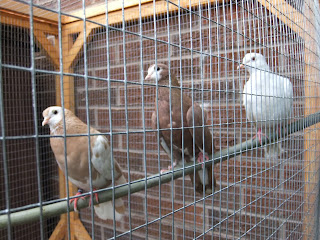What a rare and special sight I came into contact with during a late shift at Stapeley... An albino hedgehog!
It arrived via one of our RSPCA Inspectors, along with a few wood pigeons, a Canada goose, a herring gull and a blackbird. However, this little critter was by far the most intriguing out of the lot! (No offense pigeons, goose, gull & blackbird...)
Genetically, it is our ‘phenotype’ which determines the expression of inherited characteristics that we can see e.g. eye, hair, skin colour. Albinism is caused by a recessive pigmentation gene and results in that which we are familiar with, blonde or white colouring with pink eyes.
I couldn’t wait to grab my camera and share these pictures with you. It was tightly curled and needed a little persuasion to show its face, so the pictures are a little obscure!
Amazing to see such quirks of nature present in the animal kingdom as well as our own...
Sponsors of Stapeley's Summer Wildlife Assistant Position









